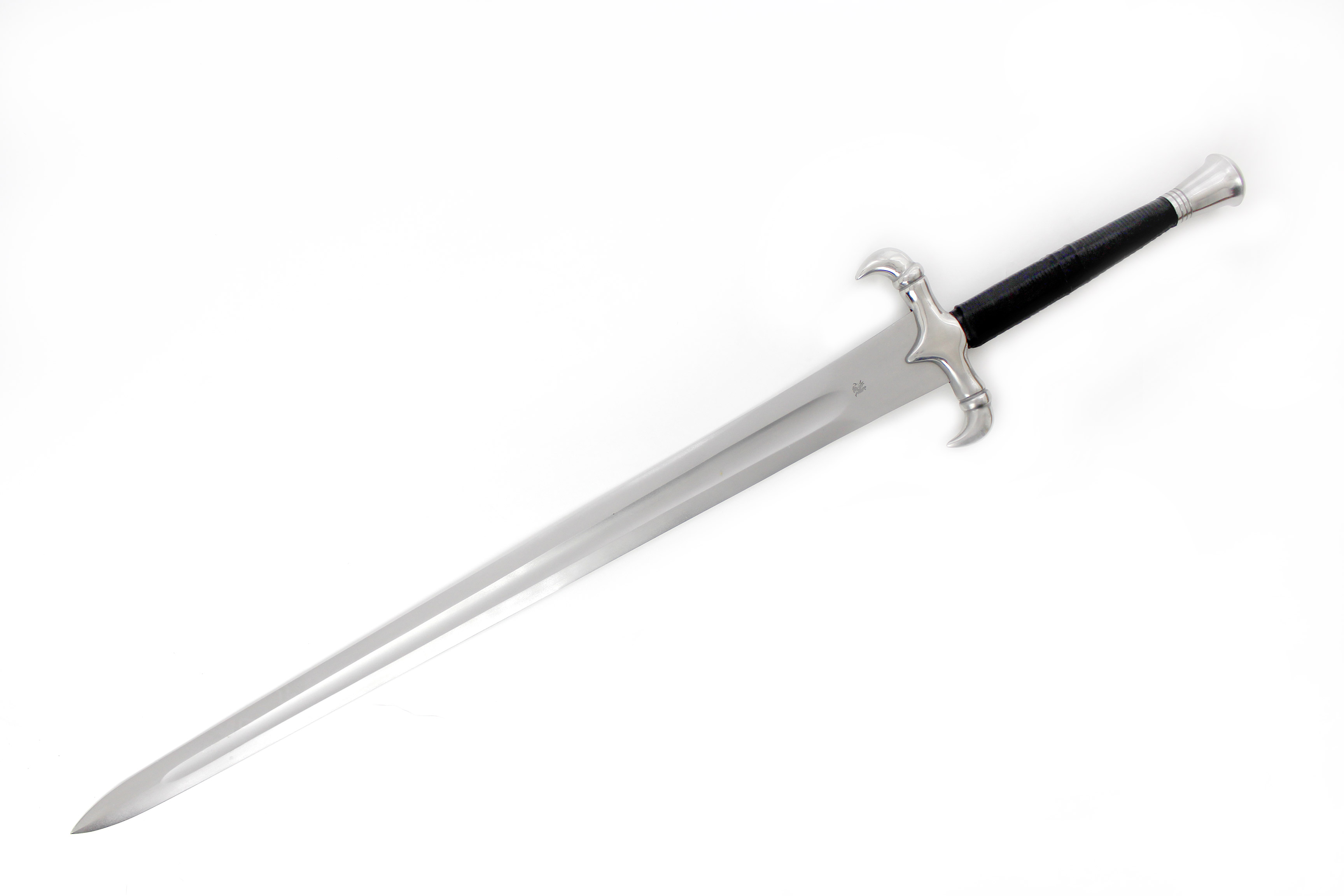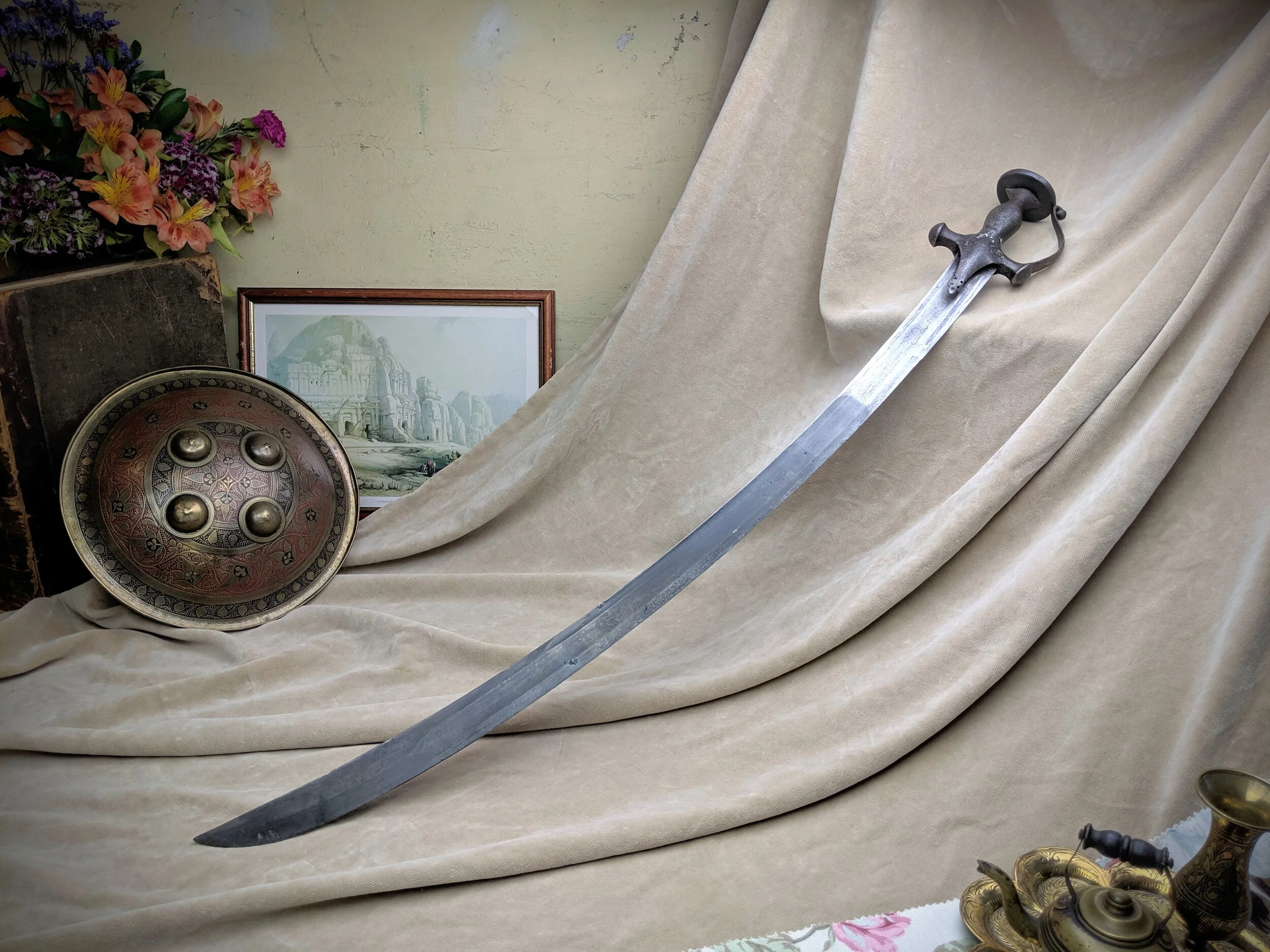Sword Definition and History
Sword definition – A sword is a bladed weapon that is typically used for cutting or thrusting. It consists of a long, sharp blade that is attached to a hilt or handle. Swords have been used for centuries in warfare, hunting, and self-defense.
In the hands of a skilled warrior, a sword becomes an extension of the body, a deadly weapon that can cleave through flesh and bone. But beyond its physical form, the sword also carries a rich history and symbolism. Connections to ancient myths and legends, as well as its role in shaping cultures and societies, have made the sword a subject of fascination for centuries.
The earliest swords were made of bronze or copper and were relatively short and straight. Over time, swords evolved to become longer and more curved, and they were often made of iron or steel. The development of new materials and manufacturing techniques led to the creation of a wide variety of swords, each with its own unique design and purpose.
In the hands of a skilled warrior, a sword becomes an extension of their will, a weapon capable of both great destruction and intricate precision. Beyond its physical form, the sword holds a profound meaning, a symbol of power, honor, and the indomitable spirit that resides within the heart of those who wield it.
Delve deeper into the sword meaning and uncover the rich tapestry of its symbolism, where the blade’s edge represents both the potential for destruction and the path to enlightenment.
Types of Swords
There are many different types of swords, each with its own unique design and purpose. Some of the most common types of swords include:
- Longswords: Longswords are long, double-edged swords that were typically used by knights and other heavy infantry. They were designed for both cutting and thrusting.
- Bastard swords: Bastard swords are shorter than longswords but longer than arming swords. They were often used by foot soldiers and could be used for both cutting and thrusting.
- Arming swords: Arming swords are single-edged swords that were typically used by infantry. They were designed for thrusting and were often used in conjunction with a shield.
- Sabers: Sabers are curved swords that were typically used by cavalry. They were designed for slashing and were often used to attack from horseback.
- Katanas: Katanas are Japanese swords that are characterized by their curved blade and single edge. They were typically used by samurai and were designed for cutting.
Sword Design and Construction: Sword Definition

The design of a sword is dictated by its intended purpose. Swords used for cutting will have a different shape than those used for thrusting. The materials used in the construction of a sword will also vary depending on its intended use. Swords made of steel are more durable than those made of iron, but they are also more expensive. The techniques used to forge and shape a sword will also affect its quality and performance.
Blade
The blade is the most important part of a sword. It is typically made of steel, but it can also be made of iron or other materials. The shape of the blade will vary depending on the intended use of the sword. Swords used for cutting will have a wider blade than those used for thrusting. The blade may also be curved or straight, depending on the user’s preference.
Hilt
The hilt is the part of the sword that is held by the user. It is typically made of wood or metal. The hilt may be straight or curved, and it may be decorated with carvings or other embellishments. The hilt should be comfortable to hold and provide a good grip.
Scabbard, Sword definition
The scabbard is a sheath that protects the blade of the sword when it is not in use. It is typically made of leather or wood. The scabbard should be well-fitted to the blade and should protect it from damage.
Swordsmanship and Techniques

Swordsmanship encompasses the techniques and principles of combat using a sword. It involves a combination of physical skill, tactical knowledge, and strategic thinking.
The basic techniques of swordsmanship include footwork, stance, grip, cutting, thrusting, and parrying. Footwork allows the swordsman to move swiftly and maintain balance while maneuvering in combat. Stance refers to the position of the body and the distribution of weight, which provides stability and allows for effective attacks and defense. Grip determines how the sword is held, influencing its handling and control. Cutting techniques involve the use of the sword’s edge to inflict wounds, while thrusting techniques utilize the sword’s point for precision strikes. Parrying techniques enable the swordsman to deflect or block incoming attacks.
Styles of Sword Fighting
Throughout history, various styles of sword fighting have emerged, each with its own unique characteristics and origins.
– Western Swordsmanship: This encompasses a range of styles that originated in Europe, including fencing, broadsword, and saber techniques. Western swordsmanship emphasizes footwork, precision, and control, with a focus on thrusting and parrying.
– Eastern Swordsmanship: This includes styles from Japan (kenjutsu), China (jian术), and Korea (geomdo). Eastern swordsmanship often incorporates circular motions, fluid body movements, and the use of both the blade and the hilt.
– Indian Swordsmanship: This includes styles such as kalaripayattu and silambam, which emphasize flexibility, agility, and the use of multiple weapons. Indian swordsmanship techniques are often characterized by complex footwork and the incorporation of acrobatic movements.
Training and Practice
Developing swordsmanship skills requires extensive training and practice. This includes physical conditioning, technical drills, and sparring. Physical conditioning involves exercises to improve strength, speed, agility, and endurance. Technical drills focus on refining specific techniques, such as cutting, thrusting, and parrying. Sparring provides a controlled environment to test and apply techniques in a realistic combat scenario.
A sword is a bladed weapon with a long, straight blade that is designed for cutting or thrusting. Swords have been used throughout history for both combat and ceremonial purposes. One of the most famous swords in history is the “Koh-i-Noor” diamond, which is said to have been found in a diamonds pit in India.
The Koh-i-Noor is now part of the British Crown Jewels and is considered one of the most valuable diamonds in the world. Swords have also been featured in many works of literature and film, such as “The Lord of the Rings” and “Game of Thrones”.
A sword is a bladed weapon, typically with a straight, double-edged blade. Its definition has remained relatively unchanged for centuries, despite the evolution of warfare. Like the umbrella pit , a sword is a tool that can be used for both protection and offense.
It is a symbol of power and authority, and has been used in countless battles and conflicts throughout history.
A sword, a weapon with a sharp blade, has been wielded throughout history for its lethal precision. Its enduring significance has spawned countless stories, myths, and legends. Today, we can delve into the multifaceted world of swords through nyt connections , a digital platform that explores the rich tapestry of the New York Times archives.
By connecting the dots between articles, videos, and multimedia, nyt connections offers a comprehensive understanding of the sword’s evolution, cultural impact, and enduring allure.